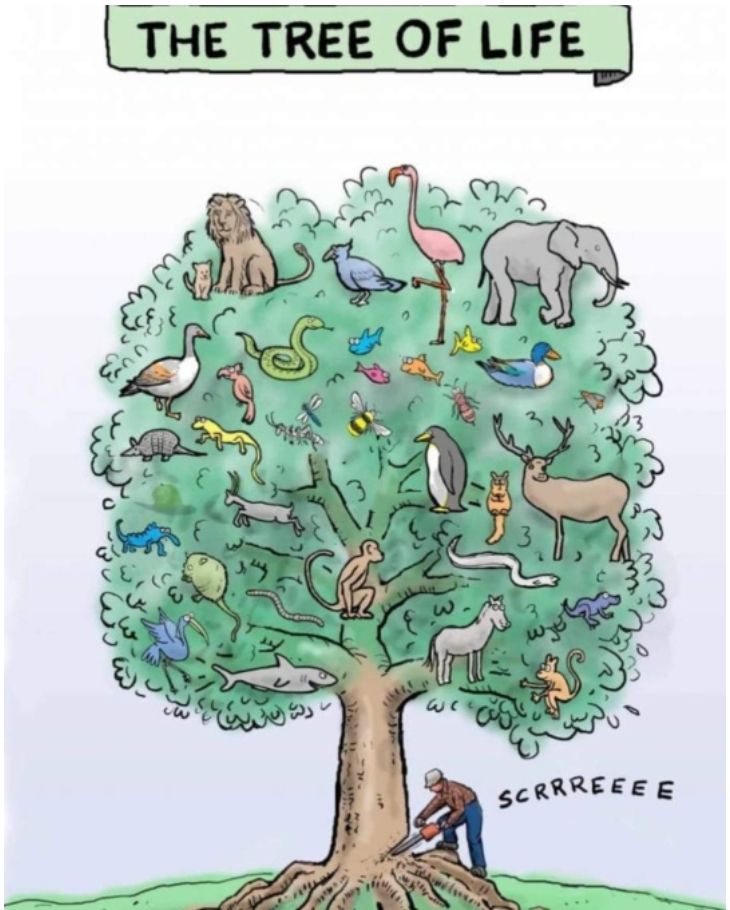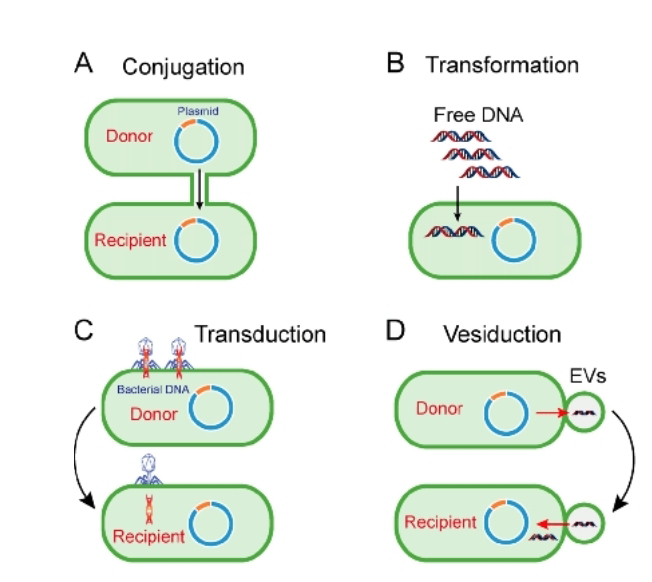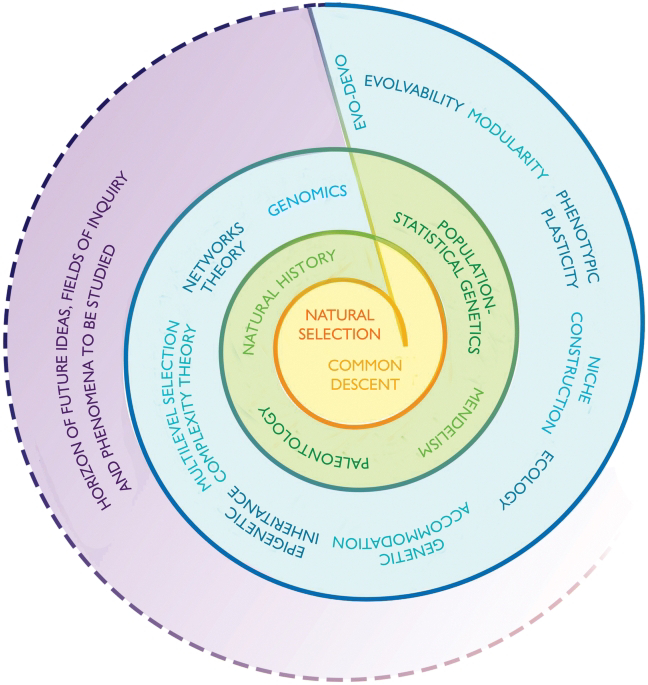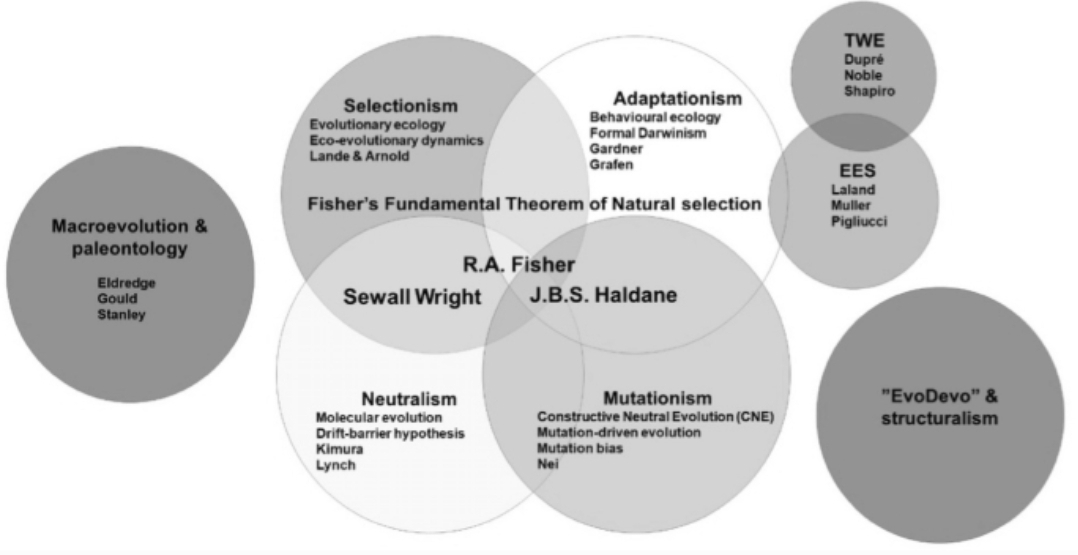Delving Deeper into the Tangled Branches: Pattern Pluralism and the Tree of Life Hypothesis
The iconic Tree of Life (TOL) has mesmerized and guided biologists for centuries, symbolizing the shared ancestry of all living things. Yet, much like a majestic oak with intricate root systems and unexpected branches, the true picture of evolution might be far more complex than a singular, neatly branching structure can capture. This is where the concept of pattern pluralism emerges, challenging the singular TOL hypothesis and advocating for a multi-faceted representation of evolutionary relationships.
Deconstructing the Limitations of the Traditional TOL:
While Darwin's vision of the TOL provided a valuable framework, its shortcomings become apparent when confronting the vast complexities of life.
The inclusion of prokaryotes, diverse and ancient single-celled organisms, proved particularly problematic. Their unique evolutionary patterns, characterized by horizontal gene transfer (HGT) where genetic material jumps between species, defy the neatly ordered lineages of a traditional tree.
Additionally, fossil records and even meticulous molecular data often offer incomplete or conflicting signals, making the reconstruction of relationships with absolute certainty an elusive pursuit.
Furthermore, the limitations of a single tree become even more stark when considering the multiplicity of scales and perspectives inherent in biological questions. Analyzing relationships at the gene level might reveal intricate networks of HGT, while a broader species-level approach could paint a picture of major branching diversification. To truly understand evolution's intricate dance, we need diverse perspectives, not a one-size-fits-all representation.
Embracing the Mosaic: The Core Tenets of Pattern Pluralism:
Pattern pluralism recognizes these limitations and offers a liberating shift in perspective. It acknowledges that various evolutionary patterns coexist and hold value depending on the question being asked and the data available. Here are some key tenets of this dynamic approach:
Multiple representations: Instead of fixating on a single tree, pattern pluralism welcomes diverse visual models like networks, webs, clouds, or even mosaics.
These representations can better capture the intricate interplay of evolutionary forces like HGT, hybridization, and convergent evolution, where seemingly unrelated organisms arrive at similar traits through independent evolutionary paths.
Scale-dependence: Relationships at different scales might appear dramatically different. Gene-level data might reveal microscopic interactions within and between species, while a broader ecosystem perspective could focus on macro-evolutionary patterns of community assembly and diversification. Recognizing this scale-dependence allows researchers to choose the most appropriate representation for their specific inquiry.
Purpose-driven exploration: The "right" representation isn't predetermined. Choosing the most effective model depends on the specific biological question being investigated. Studying the intricate dance of symbiosis might benefit from network analysis, while understanding the origin of major lineages might still require a modified TOL approach. The key is to choose the tool that best illuminates the specific aspect of evolution under investigation.
The Fruits of this New Perspective:
Embracing pattern pluralism offers several advantages:
Increased accuracy: By acknowledging the complexities of evolution, pattern pluralism allows for more nuanced and accurate representations of relationships, especially for diverse groups like prokaryotes. This leads to a more complete understanding of the intricate tapestry of life's interconnectedness.
Enhanced understanding: Exploring different representations helps uncover different aspects of evolutionary history, providing a richer and more complete picture of life on Earth. We gain a deeper appreciation for the multifaceted nature of evolution and its diverse mechanisms.
Flexibility and adaptability: As new data and techniques emerge, pattern pluralism allows researchers to adjust their approaches and incorporate new information effectively. This fosters a dynamic and ever-evolving understanding of life's history.
Navigating the Challenges:
While promising, pattern pluralism also faces some challenges:
Complexity: Interpreting and communicating diverse representations can be challenging, especially for non-specialists. It requires a shift in thinking from the familiar single-tree image to embracing the inherent complexity of evolutionary patterns.
Standardization: Lack of standardized approaches can make comparing and integrating results across different studies difficult. Developing common ground and agreed-upon methodologies is crucial for maximizing the potential of pattern pluralism.
Computational demands: Analyzing complex networks and alternative representations often requires more sophisticated computational tools and resources. Addressing this challenge necessitates continuous advancements in computational biology and fostering data-sharing collaborations.
Beyond the Horizon: Moving Forward with Pattern Pluralism:
Pattern pluralism represents a vital step in moving beyond the limitations of a single TOL while embracing the complexity and nuance of evolutionary history. By acknowledging the multiplicity of patterns and their dependence on scale and purpose, we gain a deeper understanding of the intricate tapestry of life on Earth. The future of evolutionary research lies in utilizing both traditional and novel approaches, allowing us to navigate the diverse branches of the Tree of Life with greater clarity and understanding.
Furthermore, the implications of pattern pluralism extend beyond evolutionary biology. Understanding how complex systems diversify and interact through multiple pathways can inform fields like ecology, conservation, and even our understanding of human societies. Embracing the intricate dance of life.
Beyond Genes: How the Extended Synthesis Branches Out on the Tree of Life
For decades, the Tree of Life hypothesis, depicting the interconnectedness of all living things, rested on the shoulders of NeoDarwinism. Natural selection, operating on random mutations, explained the branching patterns and diversity observed. However, recent advances in evolutionary biology have prompted the emergence of the Extended Evolutionary Synthesis (EES), offering a richer picture of the Tree of Life.
NeoDarwinism, with its focus on genes as the sole units of inheritance and selection, struggled with certain aspects of the Tree of Life. For instance, the intricate co-evolution of complex structures, like bird wings and insect antennae, seemed difficult to explain solely through independent gene mutations. Similarly, the rapid diversification events observed in specific lineages challenged the gradual, step-by-step picture of NeoDarwinism.
EES bridges these gaps by incorporating broader perspectives. Here are three key ways it strengthens the Tree of Life hypothesis:
Beyond Genes: EES acknowledges the role of non-genetic inheritance in shaping the Tree of Life. Epigenetic modifications, cultural transmission in animals, and even the influence of microbiota can be transmitted across generations, impacting evolutionary trajectories. This broadens the definition of "inheritance" and deepens our understanding of branching patterns.
Developmental Dynamics: EES recognizes the crucial role of developmental processes in sculpting phenotypes. Epigenetics can trigger cascading changes in development, leading to the emergence of novel traits and rapid diversification. This challenges the gene-centric view and emphasizes the intricate interplay between genes and development in shaping the Tree of Life.
Ecological Interactions: EES highlights the importance of ecological context in driving evolutionary change. Competition, cooperation, and niche specialization all influence how lineages diverge and adapt. This adds a dynamic layer to the Tree of Life, recognizing that branches are not isolated but influenced by their surrounding "ecosystem branches."
In essence, EES paints a more nuanced picture of evolution, where genes, development, and ecology interact to define the Tree of Life. This broader perspective allows for a better explanation of:
Rapid diversification events: By incorporating factors like ecological opportunity and developmental plasticity, EES can explain the sudden bursts of diversity seen in some lineages.
Evolution of complex traits: The interplay between genes, development, and environment provides a richer explanation for how intricate structures like wings and eyes evolved.
Horizontal gene transfer: EES acknowledges that genes can be transferred between species, adding another dimension to the branching patterns on the Tree of Life.
The EES offers a more comprehensive framework for understanding the intricate branching patterns and remarkable diversity on the Tree of Life. By expanding beyond the gene-centric view and incorporating diverse mechanisms of inheritance, development, and ecological interactions, EES paints a richer picture of how life has evolved and continues to evolve on our shared evolutionary tree.








Comments
Post a Comment